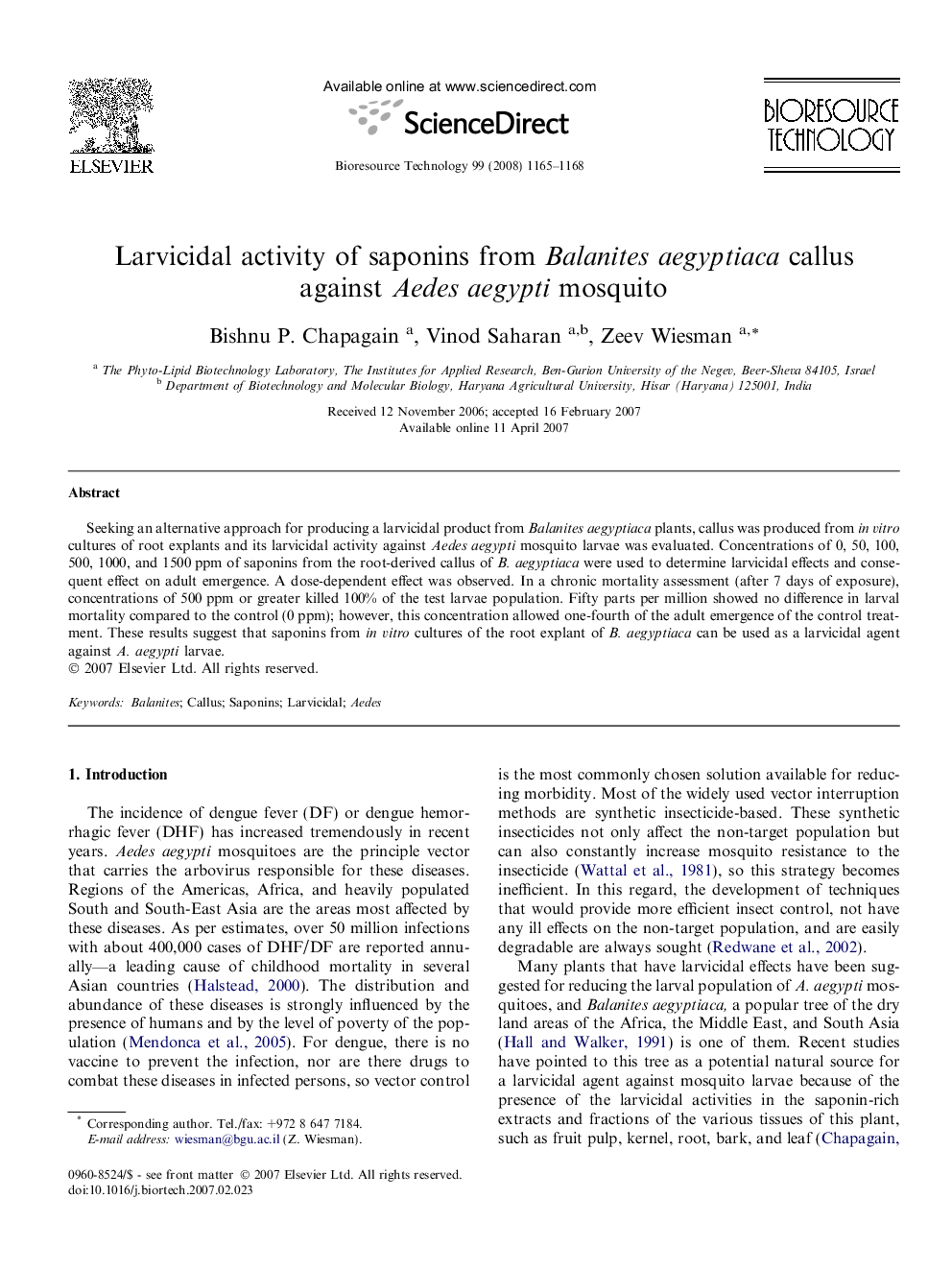| Article ID | Journal | Published Year | Pages | File Type |
|---|---|---|---|---|
| 685396 | Bioresource Technology | 2008 | 4 Pages |
Seeking an alternative approach for producing a larvicidal product from Balanites aegyptiaca plants, callus was produced from in vitro cultures of root explants and its larvicidal activity against Aedes aegypti mosquito larvae was evaluated. Concentrations of 0, 50, 100, 500, 1000, and 1500 ppm of saponins from the root-derived callus of B. aegyptiaca were used to determine larvicidal effects and consequent effect on adult emergence. A dose-dependent effect was observed. In a chronic mortality assessment (after 7 days of exposure), concentrations of 500 ppm or greater killed 100% of the test larvae population. Fifty parts per million showed no difference in larval mortality compared to the control (0 ppm); however, this concentration allowed one-fourth of the adult emergence of the control treatment. These results suggest that saponins from in vitro cultures of the root explant of B. aegyptiaca can be used as a larvicidal agent against A. aegypti larvae.
